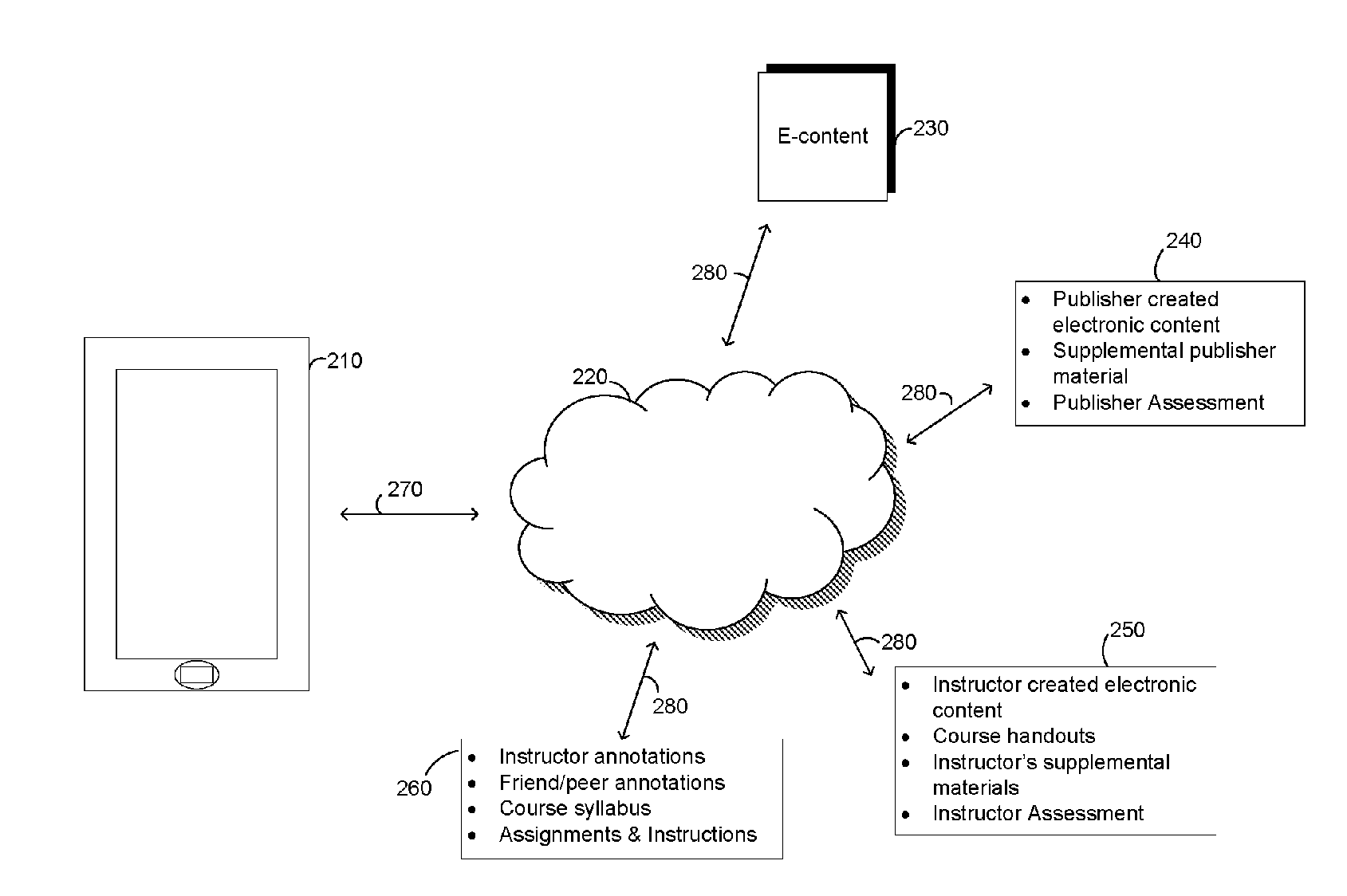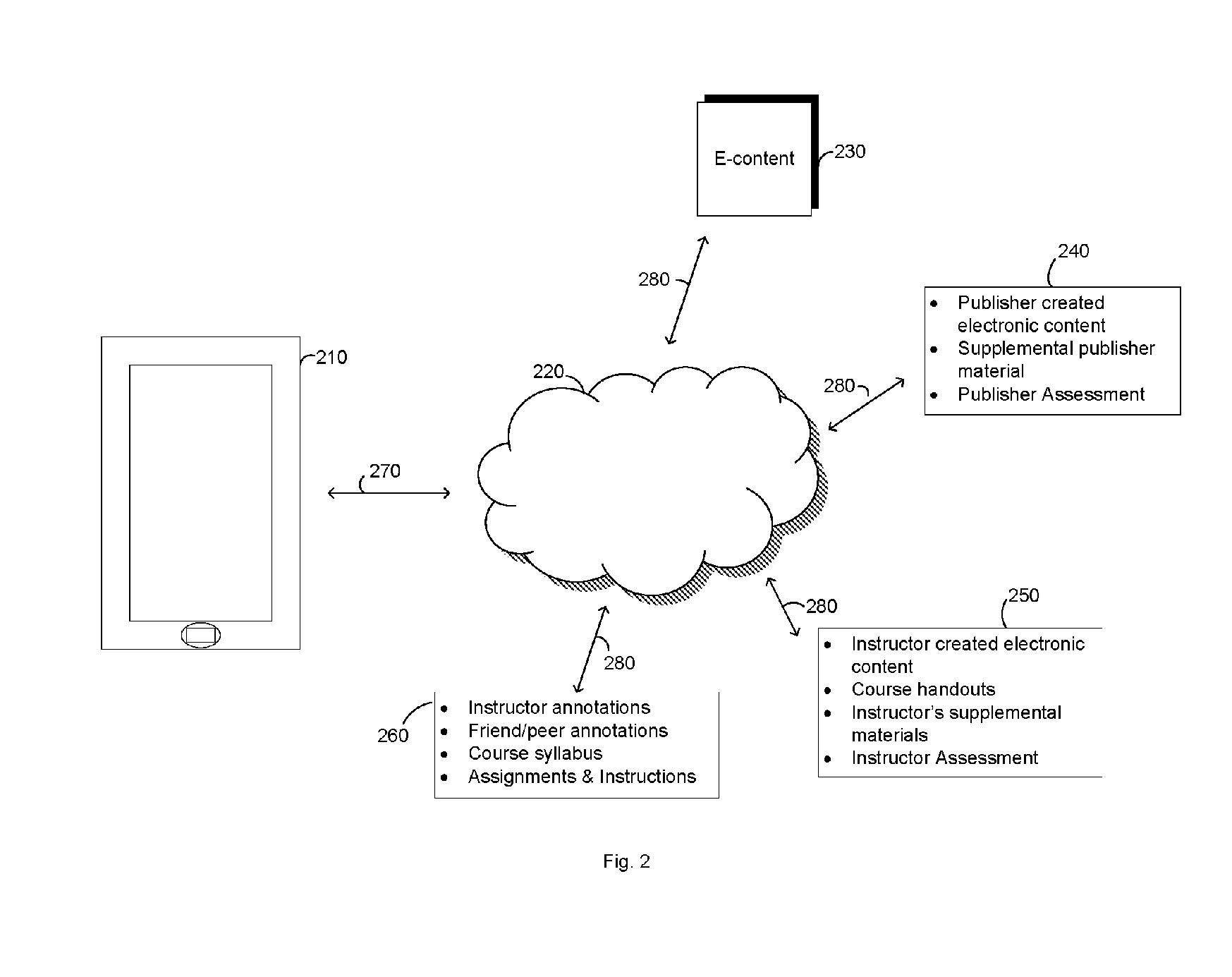Methods for sequencing electronic media content
a technology of electronic media and sequencing methods, applied in the field of sequencing electronic media content, can solve the problems of sacrificing readability, following too closely the traditional constraints of paper-based content, and current electronic reading technology is relatively limited in its ability, so as to facilitate learning, quickly and efficiently understand context, and achieve the effect of facilitating learning
- Summary
- Abstract
- Description
- Claims
- Application Information
AI Technical Summary
Benefits of technology
Problems solved by technology
Method used
Image
Examples
Embodiment Construction
[0018]FIG. 1 illustrates an example of electronic media content—in particular, an electronic textbook—that may be enhanced advantageously in accordance with embodiments of the present invention, as will be described further below. Particularly FIG. 1 shows a screen-shot of the display of a portion of the electronic version of a textbook 101. The display shows a user a portion of a preceding paragraph 103 and the next whole paragraph 102. Similar to the paper version of the textbook, the electronic version shows a graphical image 104 that complements that content of the adjoining paragraph 102. The display 101 also shows the transition to a new section of the textbook 107. This new section 109 begins a new topic for the student to learn 108. The display also shows the transition between subsections of the textbook 105. This can also represent the pagination in the paper version of the textbook. In that case, paragraph 106 would begin on the following page.
[0019]With traditional elect...
PUM
 Login to View More
Login to View More Abstract
Description
Claims
Application Information
 Login to View More
Login to View More - R&D
- Intellectual Property
- Life Sciences
- Materials
- Tech Scout
- Unparalleled Data Quality
- Higher Quality Content
- 60% Fewer Hallucinations
Browse by: Latest US Patents, China's latest patents, Technical Efficacy Thesaurus, Application Domain, Technology Topic, Popular Technical Reports.
© 2025 PatSnap. All rights reserved.Legal|Privacy policy|Modern Slavery Act Transparency Statement|Sitemap|About US| Contact US: help@patsnap.com



